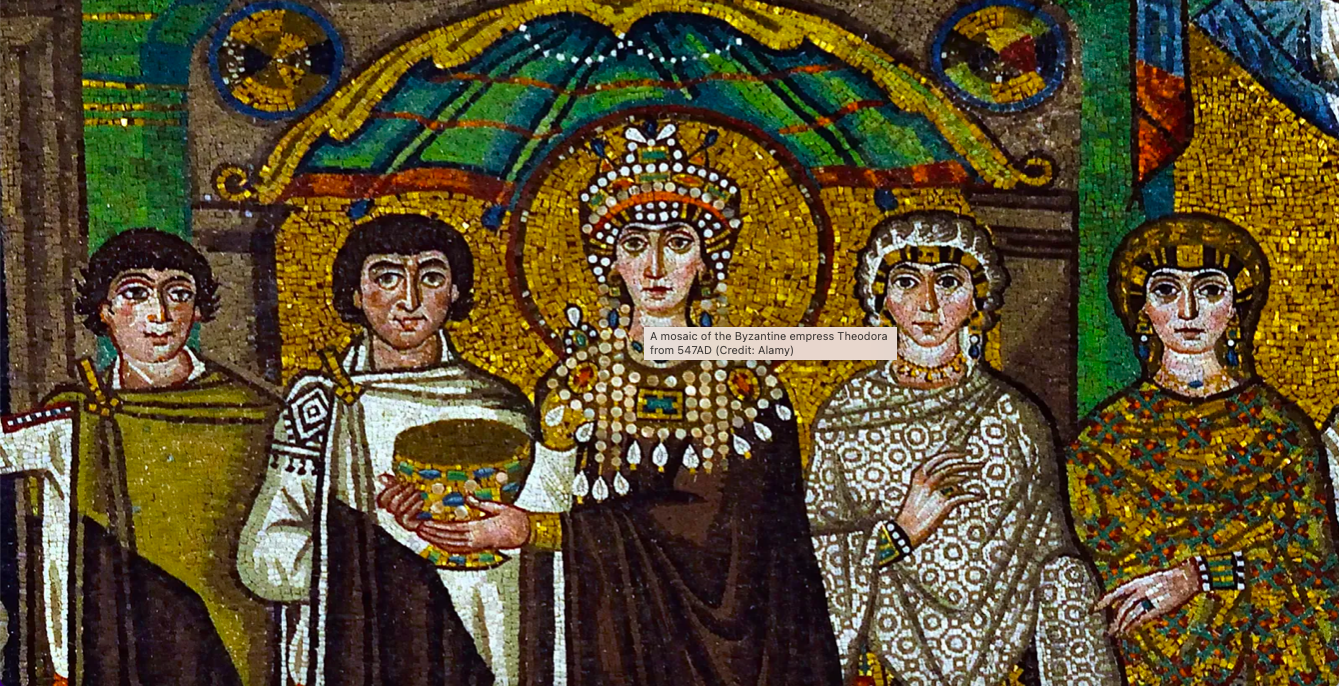Tyrian purple: The lost ancient pigment that was more valuable than gold
Quote from Alex bobby on November 27, 2023, 8:20 AM
Tyrian purple, also known as royal purple or imperial purple, was a coveted and rare pigment in the ancient world, more valuable than gold. Extracted from the glands of mollusks found in the Mediterranean, particularly the Murex snail, the process of obtaining this luxurious dye was a closely guarded secret known to only a few.
Dating back to the Phoenician city of Tyre, around 1500 BCE, the production of Tyrian purple became an art mastered by the skilled dye craftsmen of the time. The captivating hue was initially discovered by the legendary Phoenician god Heracles, who was said to have a faithful dog named Tyros. Legend has it that Tyros's mouth turned purple after biting into a Murex snail, revealing the potential of this dye.
The extraction process was labor-intensive and complex. Thousands of Murex snails were needed to produce a small amount of dye, making Tyrian purple incredibly rare. The cost of obtaining the pigment was exorbitant, involving meticulous labor, time, and significant quantities of mollusks. The resulting color ranged from deep red to a bluish-purple, and its vibrancy made it a symbol of status, power, and wealth.
The elite, including monarchs, high-ranking officials, and Roman emperors, flaunted their wealth by adorning themselves in Tyrian purple garments. It became a status symbol reserved for the ruling class, and laws were enacted to control its use and distribution. In ancient Rome, wearing Tyrian purple was restricted to the imperial family and senators, emphasizing the exclusive nature of this luxury item.
The allure of Tyrian purple extended beyond clothing to include textiles, tapestries, and even manuscripts. Its scarcity and deep, rich color made it a symbol of prestige and opulence. The demand for this prestigious pigment created a lucrative trade network in the ancient world, with Tyre at the center of its production and distribution.
The decline of Tyrian purple began with the fall of the Roman Empire, as the knowledge of its production was lost over time. Additionally, the advent of synthetic dyes in the 19th century further diminished the demand for natural pigments. Today, Tyrian purple is a historical marvel, a symbol of ancient luxury, and a reminder of the lengths people once went to for a color that surpassed the value of gold. The lost art of creating Tyrian purple serves as a testament to the intricate relationship between art, commerce, and the pursuit of the extraordinary in the annals of human history.

Tyrian purple, also known as royal purple or imperial purple, was a coveted and rare pigment in the ancient world, more valuable than gold. Extracted from the glands of mollusks found in the Mediterranean, particularly the Murex snail, the process of obtaining this luxurious dye was a closely guarded secret known to only a few.
Dating back to the Phoenician city of Tyre, around 1500 BCE, the production of Tyrian purple became an art mastered by the skilled dye craftsmen of the time. The captivating hue was initially discovered by the legendary Phoenician god Heracles, who was said to have a faithful dog named Tyros. Legend has it that Tyros's mouth turned purple after biting into a Murex snail, revealing the potential of this dye.
The extraction process was labor-intensive and complex. Thousands of Murex snails were needed to produce a small amount of dye, making Tyrian purple incredibly rare. The cost of obtaining the pigment was exorbitant, involving meticulous labor, time, and significant quantities of mollusks. The resulting color ranged from deep red to a bluish-purple, and its vibrancy made it a symbol of status, power, and wealth.
Tekedia Mini-MBA edition 16 (Feb 10 – May 3, 2025) opens registrations; register today for early bird discounts.
Tekedia AI in Business Masterclass opens registrations here.
Join Tekedia Capital Syndicate and invest in Africa’s finest startups here.
The elite, including monarchs, high-ranking officials, and Roman emperors, flaunted their wealth by adorning themselves in Tyrian purple garments. It became a status symbol reserved for the ruling class, and laws were enacted to control its use and distribution. In ancient Rome, wearing Tyrian purple was restricted to the imperial family and senators, emphasizing the exclusive nature of this luxury item.
The allure of Tyrian purple extended beyond clothing to include textiles, tapestries, and even manuscripts. Its scarcity and deep, rich color made it a symbol of prestige and opulence. The demand for this prestigious pigment created a lucrative trade network in the ancient world, with Tyre at the center of its production and distribution.
The decline of Tyrian purple began with the fall of the Roman Empire, as the knowledge of its production was lost over time. Additionally, the advent of synthetic dyes in the 19th century further diminished the demand for natural pigments. Today, Tyrian purple is a historical marvel, a symbol of ancient luxury, and a reminder of the lengths people once went to for a color that surpassed the value of gold. The lost art of creating Tyrian purple serves as a testament to the intricate relationship between art, commerce, and the pursuit of the extraordinary in the annals of human history.
Uploaded files:

